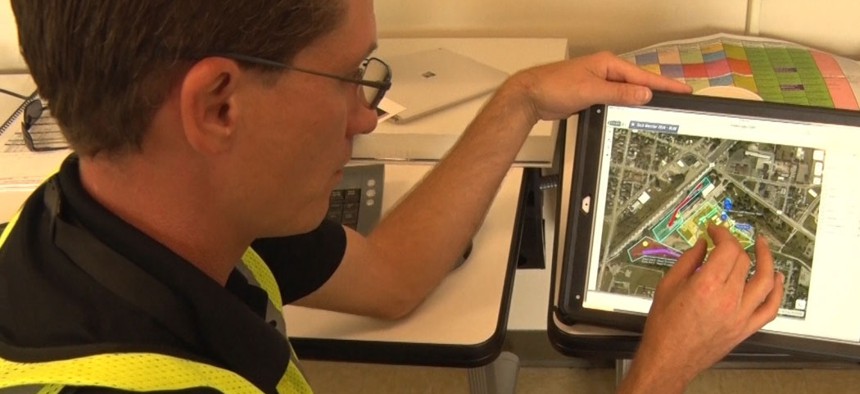
Air Force exercise lets small businesses test battlefield tech
During the recent Tech Warrior exercise, technologies developed under AFRL’s SBIR program took the field in combat scenarios.
It’s one thing to put a new piece of technology on a table, or load it into a computer, and describe what it can do, but seeing it in action in a realistic environment can teach a lot more. That’s the idea during a recent exercise in which Air Force researchers and personnel tested out some new tech, including some developed under its Small Business Innovation Research (SBIR) Program.
One example is The Design Knowledge Co.’s 4-D Common Operating Picture for Mission Assurance, which was put into action during the recent Tech Warrior exercise at Wright-Patterson Air Force Base, Ohio. Known for short as 4D-COP, the system develops advanced situational awareness by layering information sources such as video feeds, GIS data and weather information into video displays.
The annual exercise, the most recent of which took place over 10 days in August, looks to put new-tech demonstrations into simulated combat situations. Among the scenarios this year was a search for a downed helicopter in rough terrain, with personnel on the ground working with unmanned aircraft while also coming under sniper fire, AFRL said in a release.
4D-COP, development of which dates to a $1 million SBIR award the Air Force made to the company in 2009, was at Tech Warrior for the second year, which underscores another facet of the program—seeing how the products work in a close-to-real-world environment can lead to improvements.
After last year’s exercise, for example, researchers were able to make upgrades to 4D-COP that allowed the system to be used in support of fire, medical and security personnel at last year’s Air Force Marathon, helping to automate a process that until then has always been done manually, AFRL said.
“With Tech Warrior, we get to embed our technology experts in the actual operational environment,” said Eric Loomis, Design Knowledge Co. vice president. “They get to sit with the warfighter and understand better how our tools and technology might be used. It allows us to experience things we hadn’t thought about.”
Another technology tested at Tech Warrior—which covers a number of areas, ranging from health and performance monitoring to cyberattack response—was HARVEST (Cyber-Physical Agents for Recognition and Visualization of Systems Data) from Edaptive Computing, which brought other SBIR-supported technologies to the exercise as well. HARVEST is intended to optimize analysis of information coming from sensors and other sources, something that also plays into situational awareness and informed decision-making.
The idea is to give companies the chance to test out products and then go back to the drawing board when improvements are needed. “We don’t mind if small businesses bring their technologies out and fail, because there is a lot to be learned from failure,” said Tom Rice, technology director for Tech Warrior and the integration lead for AFRL’s Plans and Programs Directorate. “It’s not about looking good in front of other people. Tech Warrior is about advancing science and technology research to support the warfighter.”
NEXT STORY: In-Q-Tel buying into data analytics

